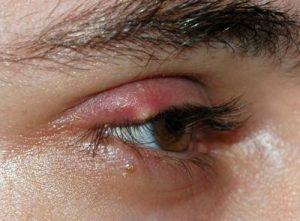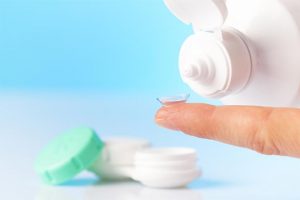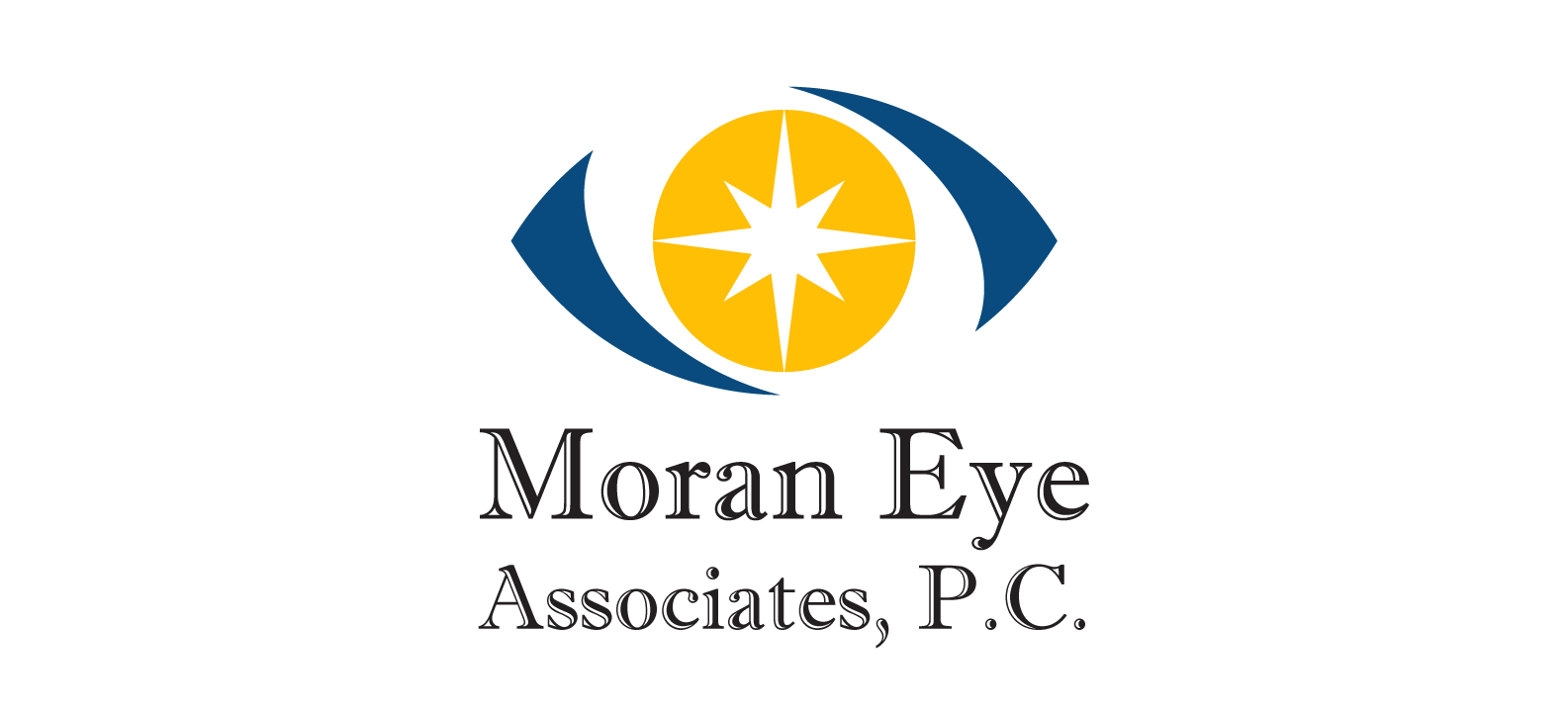by Dr. M | Feb 19, 2019 | Appointment, Conjunctivitis, Medical Eye Care, Patient Care
Irritated, runny eyes…it is Pink Eye?
If you or your children have an inflammation in the eye, it could be pink eye. The medical term for pink eye is Conjunctivitis, an inflammation of the thin, clear covering of the outermost layer of the eye and the inside of the eyelids.

Red, irritated eyes could be pink eye.
There are three different types of conjunctivitis: Viral, Bacterial and Allergic.
The treatment for each condition varies, so if you have an inflamed eye, make an appointment so our doctors can prescribe the specific treatment that will give you relief. Conjunctivitis is very common and easily treated, so don’t suffer, call for an appointment when symptoms begin.
VIRAL CONJUNCTIVITIS: If it’s viral conjunctivitis, it usually affects one eye. Because it is a virus, it is contagious, and can easily spread to your other eye. You may experience a light discharge, excessive watering, itching and crusting on the eyelids. Viral conjunctivitis cannot be treated with antibiotics.
BACTERIAL CONJUNCTIVITIS: If your inflamed eye has a heavy yellow or green discharge with crusting on the lids, you may have bacterial conjunctivitis. This type of conjunctivitis easily spreads to both eyes. It is important to start antibiotic eye drops as soon as you start to have symptoms. Be careful wiping your eyes, use a clean tissue or gauze for each eye.
ALLERGIC CONJUNCTIVITIS: Itching, redness, tearing and eyelid swelling are all signs of allergic conjunctivitis. This condition is often accompanied by other signs of allergies, like a stuffy, itchy and runny nose. It’s not contagious since it is caused by dust or allergens. Artificial tears, antihistamine eye drops, and medication can help relieve the symptoms.
For ALL types of eye inflammations, practice good hygiene. Assume that the condition is contagious until told otherwise.
- WASH your hands frequently
- STOP wearing contacts
- THROW AWAY your old contact case
- WASH your pillowcase
- DISCARD old eye makeup
Warm compresses will give you relief from Viral, Bacterial and Allergic conjunctivitis. Good hygiene practices are essential!
If you have questions about pink eye or any other eye condition, don’t hesitate to contact our office at 610-628-2022.
by Dr. M | Feb 11, 2019 | Contact Lenses, Education, Exam, Experience, Eye Safety, Procedure

What is a Stye?

Styes develop along the lash line.
A stye is a painful swollen spot in the upper or lower eyelid, near the lash line. The stye develops due to an infection in the eyelash follicles or oil glands at the lid margin.
The inflamed area may be tender to the touch. It appears as a red bump, possibly with a yellowish spot where pus has collected, like a pimple. It can occur on both the upper and lower eyelid, and is common in both children and adults. Styes develop gradually and sometimes go away on their own.
Home Care: What should I do if I feel a stye developing?
- Apply warm moist compresses 10 minutes 4 times a day.
- Keep your eyelids clean. Use warm water and baby shampoo on a cotton ball.
- STOP wearing eye makeup. Covering up a stye may slow your healing.
- Don’t wear contacts. Wear your glasses until the stye is gone.
- Wash your hands! Keep your hands clean and don’t share washcloths or towels with others.
- Do NOT Squeeze! Styes should not be squeezed or punctured at home.
When should I see the doctor?
If the stye is painful, causes vision problems, or does not improve after a few days, call for an appointment. You may need medication to treat the infection. When in doubt, pick up the phone and give us a call. We are always willing to discuss your symptoms and bring you in to the office if needed.
After your eye is healed, it is important to replace all of your eye makeup that has come in contact with your infected eye. That includes eyeliner, mascara, concealer and eye pencils.
Is there any way to prevent a stye?
A stye develops due to a blocked pore, so it makes sense that keeping your eyelids clean is the best way to prevent styes. Don’t sleep in your makeup! Take the time to remove ALL makeup before you go to bed each night. Replace your eye makeup every six months, and don’t share it with others.
Cleanse your eyelids in the morning as well to keep the lid margins clear. The crusty discharge that accumulates overnight in the corners and on the lashes should be cleared away with the warm water and baby shampoo method.
To read more about keeping your eyes healthy…scroll through the Moran Eye Associates blog. You’ll find helpful information on eye care from our doctors and staff.
by Dr. M | Jan 30, 2019 | Contact Lenses, Cornea, Education

Contact Lens Solution
The largest risk of infection for contact wearers comes from improper use and handling of the contact lenses.
Contact lenses are convenient, comfortable and simple-to-use. It’s easy to forget that they are medical devices that need to be carefully used and stored – free from bacteria, dirt and germs.
Are you at risk for infection?
Almost one million cases of eye infections due to contact lens misuse were reported in the U.S. in just one year. Misuse can be due to many reasons, including wearing your lenses too long, not following prescribed wearing schedules, sleeping in your lenses, and not cleaning your lenses properly.
The Center for Disease Control reports that 99% of contact lens wearers have worn, washed or stored their lenses in unhygienic ways. If you have bad contact lens habits, it’s time to change, and follow the rules we’ve outlined for you.
 ALWAYS follow these 6 simple rules to prevent infection
ALWAYS follow these 6 simple rules to prevent infection
1. Wash your hands with soap and water before handling your contact lenses…EVERYTIME!
2. Take out your lenses before showering, swimming and sleeping (naps & overnight).
3. Rub your lenses with disinfecting contact lens solution after you remove them. Don’t use water to clean your lenses!
4. Use fresh solution every time you store your lenses. Never add clean solution to “top off” old solution.
5. Replace your contacts as directed…don’t wear two week contacts for 30 days! Wearing your contacts past the recommended usage date can cause bacteria and germs to accumulate. The lenses may tear or deteriorate after prolonged use. When in doubt, throw them out!
6. Keep your contact case clean, rinse with disinfecting contact lens solution and let dry completely! A dirty contact lens case can be a breeding ground for bacteria. Replace your contact lens case every 3 months.
Why do you need to follow these rules?
Contact lens infections (keratitis) can be painful, and in the worst case scenario, can cause permanent scarring and even blindness. If you have developed bad lens wearing habits, stop now!
No sleeping in contacts. No swimming or showering in contacts. No dirty contact cases.
Questions? Dr. Bianca Tang is our contact lens expert. Let her work with you to find the best lenses and the best fit to give you the vision you’ve been looking for. Fill out the form to the right to contact our office for an appointment, or call us at 610-628-2022.





 ALWAYS follow these 6 simple rules to prevent infection
ALWAYS follow these 6 simple rules to prevent infection